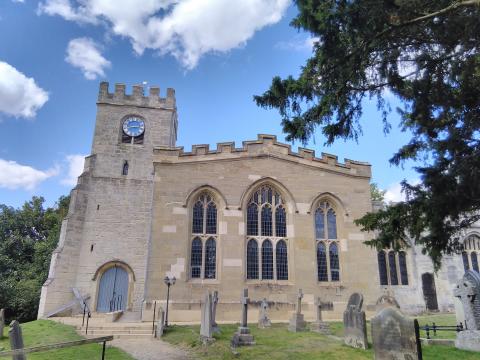Early English, Decorated Gothic & Perpendicular

One of my challenges for the summer was to settle in my mind the different schools of gothic architecture. This enables one to see whether a church window, for instance, is either Early English, Decorated Gothic or Perpendicular Gothic, in addition to the rounded curves of Norman Romanesque and the general narrowness of Anglo-Saxon. Although hardly an expert even now, it is gratifying to be able to date a building (or, more likely, that section of the building upon which one currently looks) to a particular century, or part thereof:
Romanesque or Norman (late 11th to 12th centuries)
Early English (late 12th–late 13th centuries)
Decorated Gothic (late 13th–late 14th centuries)
Perpendicular Gothic (14th–16th centuries)
Gothic Survival and Revival (16th–17th centuries, and then the 19th)
I’ll not bore you with the differences, but I will share a mildly amusing comment made by Matthew Rice in Rice’s Church Primer:
The Victorian Augustus Pugin gothicist persisted in referring to this first period at the ‘pointed’ style.
For all my obsessing over lancet arches, panel tracery and trefoils, the whole can be summed up by ‘pointed’. Sometimes we focus on the tiny details and miss the bigger picture. I now engage in some academic inspection of old church windows rather than standing back to enjoy their ancient beauty. It seems that, within the Church and theology in general, there is always much upon which to disagree and speculate: the topics of Christ’s return, the relationship between sovereign grace and human will, and the ideal structure for a local fellowship being just three examples. Yet we sometimes need to step back and look up, reflecting upon some of those wonderful verses of scripture which sum up the whole:
This is a faithful saying and worthy of all acceptance, that Christ Jesus came into the world to save sinners, of whom I am chief. 1 Timothy 1:15


- Log in to post comments


 Sunday Worship 10.45am & 6.00pm
Sunday Worship 10.45am & 6.00pm